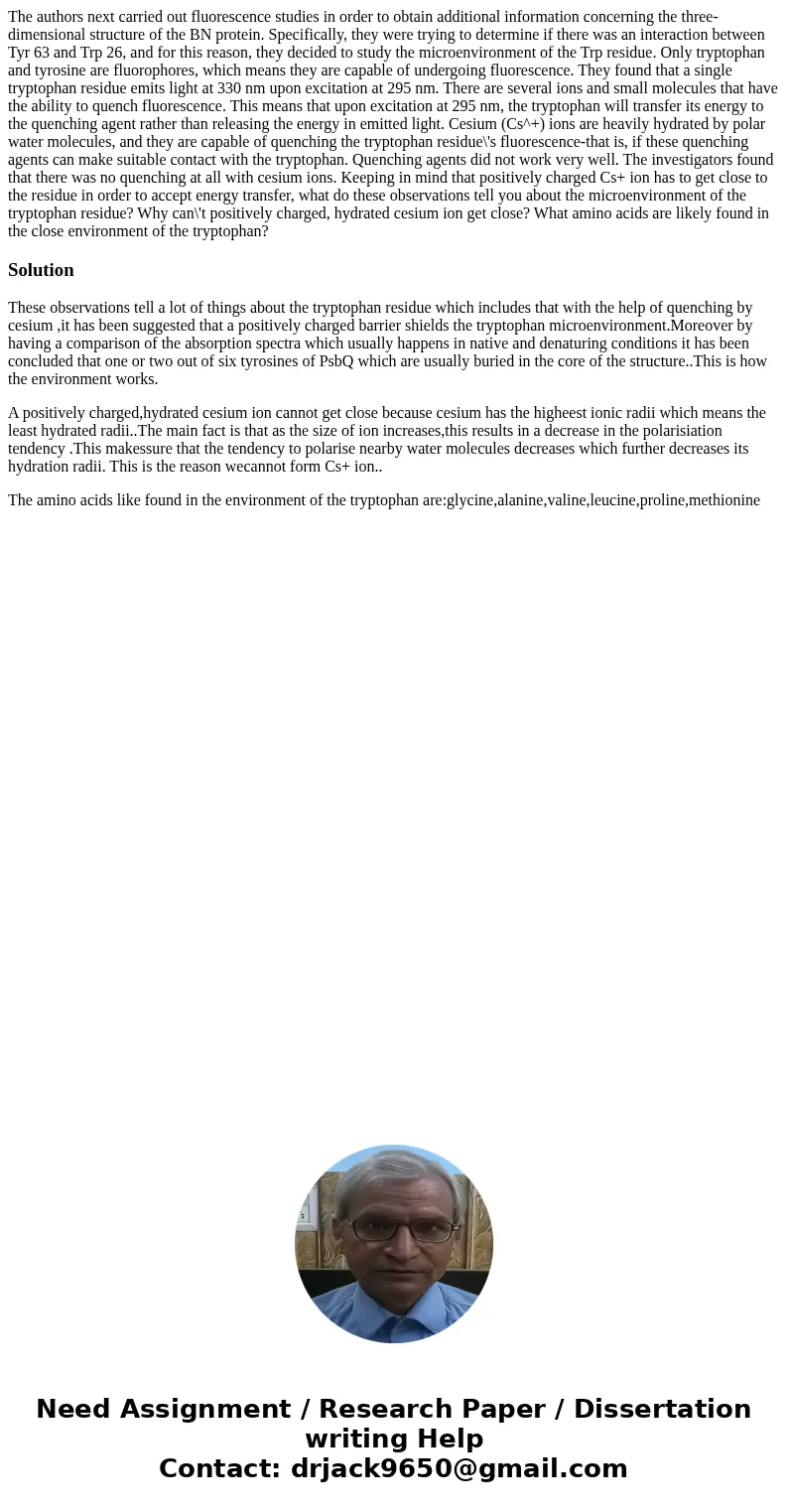The authors next carried out fluorescence studies in order to obtain additional information concerning the three-dimensional structure of the BN protein. Specifically, they were trying to determine if there was an interaction between Tyr 63 and Trp 26, and for this reason, they decided to study the microenvironment of the Trp residue. Only tryptophan and tyrosine are fluorophores, which means they are capable of undergoing fluorescence. They found that a single tryptophan residue emits light at 330 nm upon excitation at 295 nm. There are several ions and small molecules that have the ability to quench fluorescence. This means that upon excitation at 295 nm, the tryptophan will transfer its energy to the quenching agent rather than releasing the energy in emitted light. Cesium (Cs^+) ions are heavily hydrated by polar water molecules, and they are capable of quenching the tryptophan residue\'s fluorescence-that is, if these quenching agents can make suitable contact with the tryptophan. Quenching agents did not work very well. The investigators found that there was no quenching at all with cesium ions. Keeping in mind that positively charged Cs+ ion has to get close to the residue in order to accept energy transfer, what do these observations tell you about the microenvironment of the tryptophan residue? Why can\'t positively charged, hydrated cesium ion get close? What amino acids are likely found in the close environment of the tryptophan?
These observations tell a lot of things about the tryptophan residue which includes that with the help of quenching by cesium ,it has been suggested that a positively charged barrier shields the tryptophan microenvironment.Moreover by having a comparison of the absorption spectra which usually happens in native and denaturing conditions it has been concluded that one or two out of six tyrosines of PsbQ which are usually buried in the core of the structure..This is how the environment works.
A positively charged,hydrated cesium ion cannot get close because cesium has the higheest ionic radii which means the least hydrated radii..The main fact is that as the size of ion increases,this results in a decrease in the polarisiation tendency .This makessure that the tendency to polarise nearby water molecules decreases which further decreases its hydration radii. This is the reason wecannot form Cs+ ion..
The amino acids like found in the environment of the tryptophan are:glycine,alanine,valine,leucine,proline,methionine

 Homework Sourse
Homework Sourse